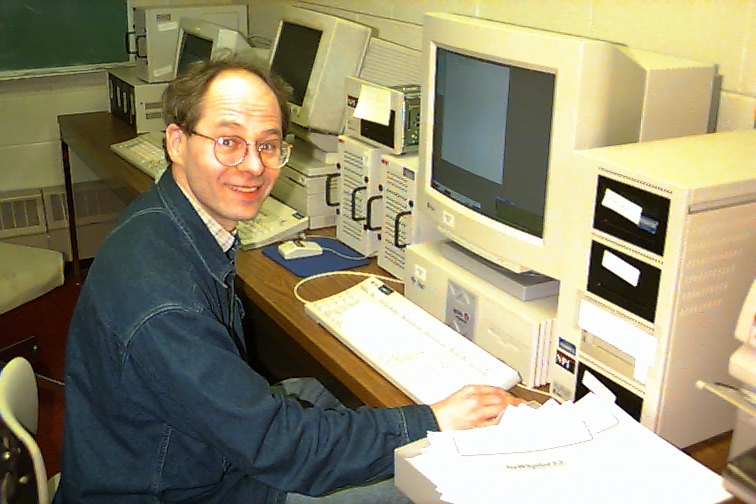
B2.5 CODE FACT SHEET 
1. Code Name: B2.5
2. Category: Plasma edge physics
3. Responsible Scientist: Bas Braams
4. Others involved in code development: R. Schneider, D. P. Coster, M. Baelmans
5. One line description: Solves fluid equations describing the mutli-species edge plasma in a two-dimensional geometry.
6. Computer systems which code runs on: Cray, Unix workstations
7. Typical running time (if applicable): 0.1 hr -- 5 hrs on Cray
8. Approximate number of code lines: 20,000
9. Does this code read data files from another code? Yes, atomic data from Adpak and Strahl. Interfaces to equilibrium codes also exist.
10. Does this code produce data files that can be read by another code? Yes, postprocessing is entirely separate from ther main program.
11. 1-2 paragraph description of code: The code solves fluid equations describing a multispecies plasma in two-dimensional geometry. Continuity equations and equations for parallel momentum balance are solved for all charge states of the bulk species and the considered impurities, which are coupled by ionization and recombination and friction; in addition we have an electron temperature equation, an ion+neutral temperature equation, and an electric potential equation. The calculations rely on tabulated atomic physics data for hydrogen and other species. Parallel transport is classical according to Braginskii and Balescu, though flux-limited; perpendicular transport is anomalous. The code is applied both as an aid to interpreatation of experimental data and as an aid to the design of new experiments, in particular ITER.
12. Similar codes to this code, and distinguishing differences: UEDGE (Rognlien, Knoll, et al.); EDGE2D (Simonini, Taroni).
13. Journal References describing code (up to 3): R. Schneider, D. Reiter, D. P. Coster, J. Neuhauser, K. Lackner, and B. J. Braams: "Analysis of Cold Divertor Concepts for ITER". J. Nucl. Mater. 220-222 (1995) 1076--1080. B. J. Braams: "Radiative Divertor Modelling for ITER and TPX", Contrib. Plasma Phys. 36 (1996) 276--281.
14. New code capabilities planned for next 1-2 years: Adaptive mesh refinement. Robust solution of full classical transport equations. Coupling to Degas-2 neutral gas code.
15. Code users: Varies over time. In the U.S.: K. A. Werley, J. Hogan, R. Maingi, D. P. Stotler. Also S. A. Cohen and students. In Europe: B2-EIRENE collaboration: R. Schneider, D. P. Coster, M. Baelmans, A. Kukushkin. Also G. P. Maddison. In Japan: S. Ohtsu, Y. Murakami In Korea: Jung-Hun Han In India: Manoj, Jaishankar.
16. Present and recent applications of code: Continuing work on Asdex-Upgrade model validation (B2-EIRENE), DIII-D model validation. Studies of radiative divertor scenarios for ITER. ITER divertor optimization (B2-EIRENE).
17. Status of code input/output documentation. Exists
18 Year Code was first used and present frequency of use: 1983, and continuous use thereafter.
19. Estimate of Man-Years invested in developing code: It is hard to separate development time and applications work. Say eight years development time, not counting EIRENE.
20. Catagories of usage of Code (Check all that apply):
(x) application code to do analysis and prediction of experiments
(x) numerical testbed of theoretical ideas
(x) physics module to be used in integrated modelling
(x) code for machine design
21. Language code is writen in: Fortran-77
22. Results of intercomparisons with other codes and results of validation against experiments. See the published work of the Neuhauser, Schneider, et al. group in particular.